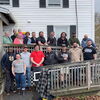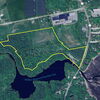Processing Your Payment
Please do not leave this page until complete. This can take a few moments.
- News
-
Editions
-
- Lists
-
Viewpoints
-
Our Events
-
Event Info
- Women's Leadership Forum 2025
- On the Road with Mainebiz in Bethel
- Health Care Forum 2025
- On The Road with Mainebiz in Greenville
- On The Road with Mainebiz in Waterville
- Small Business Forum 2025
- Outstanding Women in Business Reception 2025
- On The Road with Mainebiz in Bath
- 60 Ideas in 60 Minutes Portland 2025
- 40 Under 40 Awards Reception 2025
- On The Road with Mainebiz in Lewiston / Auburn
- 60 Ideas in 60 Minutes Bangor 2025
Award Honorees
- 2025 Business Leaders of the Year
- 2024 Women to Watch Honorees
- 2024 Business Leaders of the Year
- 2023 NextUp: 40 Under 40 Honorees
- 2023 Women to Watch Honorees
- 2023 Business Leaders of the Year
- 2022 NextUp: 40 Under 40 Honorees
- 2022 Women to Watch Honorees
- 2022 Business Leaders of the Year
-
-
Calendar
-
Biz Marketplace
- News
-
Editions
View Digital Editions
Biweekly Issues
- April 21, 2025 Edition
- April 7, 2025
- March 24, 2025
- March 10, 2025
- Feb. 24, 2025
- Feb. 10, 2025
- + More
Special Editions
- Lists
- Viewpoints
-
Our Events
Event Info
- View all Events
- Women's Leadership Forum 2025
- On the Road with Mainebiz in Bethel
- Health Care Forum 2025
- On The Road with Mainebiz in Greenville
- On The Road with Mainebiz in Waterville
- + More
Award Honorees
- 2025 Business Leaders of the Year
- 2024 Women to Watch Honorees
- 2024 Business Leaders of the Year
- 2023 NextUp: 40 Under 40 Honorees
- 2023 Women to Watch Honorees
- 2023 Business Leaders of the Year
- + More
- 2022 NextUp: 40 Under 40 Honorees
- 2022 Women to Watch Honorees
- 2022 Business Leaders of the Year
- Nomination Forms
- Calendar
- Biz Marketplace
February 7, 2005
Learning to teach | Web design firm Image Works targets the museum exhibit market
By Dorothy Ogrodowczyk
As founder and owner of Portland-based Image Works, Dana Hutchins has spent 10 years helping some of the biggest companies in Maine create e-commerce sites and intranets that allow users to quickly find what they're looking for and get on with their lives. Lately, though, he's been pondering a new technology challenge: how to entice users to linger over an interactive display.
Image Works and the Gulf of Maine Research Institute in Portland recently teamed up to design an educational content software platform called XhibitNet, slated to be launched at GMRI's learning center for fifth and sixth graders in September. From that experience, Hutchins says he's already encountered challenges unlike those found in corporate Web design. "There's the learning goal ˆ what's the before and after as people go through an exhibit," says Hutchins, "and there's also the usability ˆ the behavioral and motivational stuff. They need to be integrated successfully."
Now, Image Works has an opportunity to refine those techniques. Based on its work with GMRI, Image Works in January received a six-month, $98,591 Small Business Innovation Research grant from the National Science Foundation to develop prototype exhibits at the Orlando Science Center in Florida. With that money, Image Works will attempt to adapt XhibitNet to engage casual museumgoers of all ages. Together with OSC, Image Works also will conduct research on visitor satisfaction and learning experiences.
The goal is to create interactive museum exhibits that "remember" visitors and allow them to access portions of the exhibits on the Internet after they've left the museum. It's part of what museum experts see as a growing trend toward personalizing the experience for each visitor ˆ and Image Works hopes the project will help the company establish itself as an expert in the field.
Though it's hard to pin down an estimate for the size of the museum exhibit market, John Falk, director of the nonprofit Institute for Learning Innovation in Annapolis, Md., calls interactive displays "a lucrative niche industry." And Hutchins wants a piece of it. "We think innovative applications of technology for teaching and learning is one of the most exciting and essential fields out there now," says Hutchins. "Image Works' expertise in user experience research and design for information technology development gives us some key competitive advantages."
Lessons from video games
This isn't the first time Image Works has seen a trend and followed it into a new market. Hutchins, 50, founded the company in 1977 as a video production firm handling corporate sales presentations and the like for clients including L.L. Bean and National Semiconductor. In the late 80s, Hutchins began learning about software development and animation, which steered the company toward its Web development niche that led to the creation of an e-commerce site for Tom's of Maine and a website and a corporate intranet for MEMIC, among others.
That focus on Web development led to projects with GMRI, including a database-driven marine research website, www.fishresearch.org, launched in December 2000. When GMRI wanted to design a learning center for middle schoolers, it went with Image Works, even though the firm had never done that kind of work before.
To overcome that lack of experience, Alan Lishness, GMRI's chief innovation officer, says he and Hutchins visited about 50 museums to learn how organizations communicate information. XhibitNet was developed in part, say Hutchins and Lishness, in response to a body of research conducted by NSF and others that suggests casual museumgoers (as opposed to a group of students on field trip) spend an average of less than one minute at each exhibit.
To develop an exhibit that would hold people's attention, the team looked to a proven magnet: video games. With XhibitNet, they aimed to mimic video games' so-called challenge-reward cycle ˆ allowing players to achieve distinct goals often enough to keep them interested, but not so often that the rewards become worthless.
The platform also assigns an alphanumeric code to each visitor and stores information about that visitor's "research." After they've left the museum, they can access that information via the Internet using the code. In addition, XhibitNet was designed to accommodate swappable content, allowing GMRI's research team to create new content that can be simply plugged into the platform.
That approach appealed to Brian Tonner, president and CEO of the Orlando Science Center, who met Hutchins when the science center hosted a meeting of the Association of Science-Technology Centers in February 2004. Thinking that XhibitNet could be applicable to OSC's educational vision, the science center partnered with Image Works to apply for a research grant. "We call it the 'Me Museum' concept," Tonner says. "What we saw was an opportunity to use computer-based animations, graphics and video to create a customized experience for our visitors."
Personalization is hot in the museum world, according to Lynn Dierking, associate director of the Institute for Learning Innovation. But the concept of personalizing museum exhibits has been around for about 10 years at places like the Maryland Science Center in Baltimore and the Museum of Science, Boston. And both Dierking and Hutchins say there are other companies that create personalized exhibits.
Though Dierking also says her organization's research indicates that the problem of museumgoers barely glancing at exhibits has been overstated, she says XhibitNet may help combat a different issue entirely: exhibit obsolescence. Traditional exhibits are in planning and development for three to five years, and sometimes, Dierking says, "they're outdated by the time they get installed." By contrast, Lishness estimates GMRI can develop new content for its learning center in nine months, and Hutchins estimates it would take only about three to four months at OSC. "It's exciting," Dierking says of XhibitNet's swappable content design. "I don't know that [this type of] work has been done before."
But it will be a while before Image Works finds out if XhibitNet will have an impact on the museum world. A report summarizing the results of Image Works' current market research is due to NSF in June. Then, Image Works plans to apply for a $500,000, two-year phase two grant, which will help the company commercialize XhibitNet and begin marketing the platform to new clients.
Amid excitement over new interactive display technologies, Dierking also cautions that basing museum exhibits on computers may present a new problem. "As we go down this avenue," she says, "we have to make sure using technology doesn't take away from the unique experience of a museum visit."
That's something Image Works and its clients are trying to avoid. "Where we use technology, we have physical specimens that go along with it, and we design stations to serve two to four visitors simultaneously," says Hutchins. "It goes way beyond a CD-ROM or the Internet."
Image Works and the Gulf of Maine Research Institute in Portland recently teamed up to design an educational content software platform called XhibitNet, slated to be launched at GMRI's learning center for fifth and sixth graders in September. From that experience, Hutchins says he's already encountered challenges unlike those found in corporate Web design. "There's the learning goal ˆ what's the before and after as people go through an exhibit," says Hutchins, "and there's also the usability ˆ the behavioral and motivational stuff. They need to be integrated successfully."
Now, Image Works has an opportunity to refine those techniques. Based on its work with GMRI, Image Works in January received a six-month, $98,591 Small Business Innovation Research grant from the National Science Foundation to develop prototype exhibits at the Orlando Science Center in Florida. With that money, Image Works will attempt to adapt XhibitNet to engage casual museumgoers of all ages. Together with OSC, Image Works also will conduct research on visitor satisfaction and learning experiences.
The goal is to create interactive museum exhibits that "remember" visitors and allow them to access portions of the exhibits on the Internet after they've left the museum. It's part of what museum experts see as a growing trend toward personalizing the experience for each visitor ˆ and Image Works hopes the project will help the company establish itself as an expert in the field.
Though it's hard to pin down an estimate for the size of the museum exhibit market, John Falk, director of the nonprofit Institute for Learning Innovation in Annapolis, Md., calls interactive displays "a lucrative niche industry." And Hutchins wants a piece of it. "We think innovative applications of technology for teaching and learning is one of the most exciting and essential fields out there now," says Hutchins. "Image Works' expertise in user experience research and design for information technology development gives us some key competitive advantages."
Lessons from video games
This isn't the first time Image Works has seen a trend and followed it into a new market. Hutchins, 50, founded the company in 1977 as a video production firm handling corporate sales presentations and the like for clients including L.L. Bean and National Semiconductor. In the late 80s, Hutchins began learning about software development and animation, which steered the company toward its Web development niche that led to the creation of an e-commerce site for Tom's of Maine and a website and a corporate intranet for MEMIC, among others.
That focus on Web development led to projects with GMRI, including a database-driven marine research website, www.fishresearch.org, launched in December 2000. When GMRI wanted to design a learning center for middle schoolers, it went with Image Works, even though the firm had never done that kind of work before.
To overcome that lack of experience, Alan Lishness, GMRI's chief innovation officer, says he and Hutchins visited about 50 museums to learn how organizations communicate information. XhibitNet was developed in part, say Hutchins and Lishness, in response to a body of research conducted by NSF and others that suggests casual museumgoers (as opposed to a group of students on field trip) spend an average of less than one minute at each exhibit.
To develop an exhibit that would hold people's attention, the team looked to a proven magnet: video games. With XhibitNet, they aimed to mimic video games' so-called challenge-reward cycle ˆ allowing players to achieve distinct goals often enough to keep them interested, but not so often that the rewards become worthless.
The platform also assigns an alphanumeric code to each visitor and stores information about that visitor's "research." After they've left the museum, they can access that information via the Internet using the code. In addition, XhibitNet was designed to accommodate swappable content, allowing GMRI's research team to create new content that can be simply plugged into the platform.
That approach appealed to Brian Tonner, president and CEO of the Orlando Science Center, who met Hutchins when the science center hosted a meeting of the Association of Science-Technology Centers in February 2004. Thinking that XhibitNet could be applicable to OSC's educational vision, the science center partnered with Image Works to apply for a research grant. "We call it the 'Me Museum' concept," Tonner says. "What we saw was an opportunity to use computer-based animations, graphics and video to create a customized experience for our visitors."
Personalization is hot in the museum world, according to Lynn Dierking, associate director of the Institute for Learning Innovation. But the concept of personalizing museum exhibits has been around for about 10 years at places like the Maryland Science Center in Baltimore and the Museum of Science, Boston. And both Dierking and Hutchins say there are other companies that create personalized exhibits.
Though Dierking also says her organization's research indicates that the problem of museumgoers barely glancing at exhibits has been overstated, she says XhibitNet may help combat a different issue entirely: exhibit obsolescence. Traditional exhibits are in planning and development for three to five years, and sometimes, Dierking says, "they're outdated by the time they get installed." By contrast, Lishness estimates GMRI can develop new content for its learning center in nine months, and Hutchins estimates it would take only about three to four months at OSC. "It's exciting," Dierking says of XhibitNet's swappable content design. "I don't know that [this type of] work has been done before."
But it will be a while before Image Works finds out if XhibitNet will have an impact on the museum world. A report summarizing the results of Image Works' current market research is due to NSF in June. Then, Image Works plans to apply for a $500,000, two-year phase two grant, which will help the company commercialize XhibitNet and begin marketing the platform to new clients.
Amid excitement over new interactive display technologies, Dierking also cautions that basing museum exhibits on computers may present a new problem. "As we go down this avenue," she says, "we have to make sure using technology doesn't take away from the unique experience of a museum visit."
That's something Image Works and its clients are trying to avoid. "Where we use technology, we have physical specimens that go along with it, and we design stations to serve two to four visitors simultaneously," says Hutchins. "It goes way beyond a CD-ROM or the Internet."










Comments